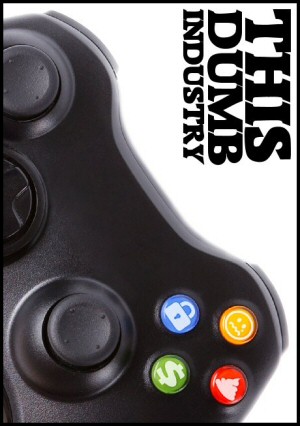Sometimes you come across a game that’s not doing anything particularly new, but it’s re-treading old ground with such a dedication to quality that it feels new. “I never knew this sort of game could be this genuinely enjoyable.”
Mechanically, The Room is a descendant of the classic “escape the room” titles that were all the rage among browser-based games a decade ago. Through careful examination you discover a sliding panel, which reveals a button, which pops open a container, which contains a key, which opens a safe, which contains a scrap of paper, which details the correct arrangement of some previously-inscrutable switches, which unfastens a lid, which reveals a clock, which you get the idea. In this game you’re working your way into a puzzle box rather than working to exit a room, but it’s the same basic idea. Either way you’re unraveling the work of some obstructionist jackass who has confused obscurity with security, leaving their plans vulnerable to someone with a flair for lateral thinking and lots of free time.
The trick for me here is that it’s really hard to quantify what makes The Room so good. Which kind of sucks, since that’s my job. But in order to sustain my thin veneer of professionalism, let me take a half-assed stab at it…

The problem with your typical escape the room puzzle is that it invariably turns into a pixel-hunt. A room is a big place and you can never see more than a quarter of it at any given time. If you find yourself stuck, you need to crawl all over the room, interrogating each surface to find the one discolored spot or misaligned edge that hints at the next secret. The Room turns the premise inside-out and has you trying to get into a box, which means you’ve always got the entire problem right in front of you.
This focus also makes for more striking visuals. Since THE BOX is always the focal point of the scene, the designer can give us dramatic lighting and striking camera angles. This merger of camera focus and gameplay focus wouldn’t work in a context where our point of interest will jump around the room unpredictably. After all, you can’t give every corner and alcove in the room its very own spotlight.
The other thing The Room has going for it is a really strong sense of kinaesthetics. Instead of making you click on a lever to trigger it, you have to click on the spot where you’d actually grasp it in real life, and then drag the mouse the way you want it to go. It sounds like such a small thing, but it’s amazing how much more “alive” this box feels because of it. The sounds and mouse gestures really give a sense that you’re turning wheels, pulling levers, and spinning dials, and none of this would be true if the game adhered to a simple “click on the thing to make it go” approach to interactivity.

The other thing the game has going for it is a high level of production values. The boxes-within-boxes that you must unlock are incredibly detailed. This box has parts that are made of metal, stone, glass, and several different kinds of wood. Every part looks and feels unique, and the solution to every puzzle feels like a reward, even though in reality all you’ve gained is yet another puzzle.
As of this writing, The Room is just $5 USD and is available on the App Store, Google Play, Amazon, and Steam. Highly recommended for anyone looking for a low-key puzzle game that can be played in short bursts.
This is Why We Can’t Have Short Criticism

Here's how this site grew from short essays to novel-length quasi-analytical retrospectives.
Object-Oriented Debate

There are two major schools of thought about how you should write software. Here's what they are and why people argue about it.
The Best of 2015

My picks for what was important, awesome, or worth talking about in 2015.
The Best of 2017

My picks for what was important, awesome, or worth talking about in 2017.
I Was Wrong About Borderlands 3

I really thought one thing, but then something else. There's a bunch more to it, but you'll have to read the article.
 T w e n t y S i d e d
T w e n t y S i d e d

What a story Shamus.Anyway,hows your sex life?
I’m surprised there wasn’t even a nod to that in the column.
To be fair, it was kind of an obvious joke. I’m actually surprised that there isn’t a blurb at some point saying “No, I’m not going to make that obvious joke. EVERYONE makes that joke.”
Skotchka makes everything better!
I’m here early and there’s a page break.
This feels so…. wrong….
I’m really enjoying this series about your Steam Backlog – even when I’m not all that interested in the actual game.
Shamus, have you ever put your steam ID into this website: http://steamleft.com/
It scrapes your games from your Steam ID (if it’s public), then compares the Play Times on each to this website:
https://howlongtobeat.com/
To give an estimate on how much continuous play time you would need to “finish” all the games you own.
it’s not perfect- for example, if you have games that don’t really have an “end” to them, like Kerbal Space Program, or competitive multiplayer games, the “how long to beat” entry is a bit arbitrary.
But it is a nice visualizer.
A while back I wrote a bash scraper to log my “Steam Left” time once per day, to see how much of a dent I was making. Made for a nice little exercise.
I’ve got 1798 hours left, according to that site. Nearly 80 days of playing, if I were to do nothing but game 24/7.
At least I’ve got lots of content for streaming & reviewing.
I have 4700 Hours (almost 196 days) remaining on my steam library completion, which it says is about the same amount of time as watching the entirety of Star Trek (All TV shows and movies) 7 times.
2216 hours for my account. This means that, assuming an average playtime of 2 hours/day, I’m set for the next 3 years. (At least I would be, if I intended to play all the bundle fodder.)
I’ve played all three so far, on Android. They are amazingly well created and focussed; and while later on they environments get larger, you never feel you’re ‘pixel hunting’ – you can always figure things out logically (Following wires, looking at environmental clues, using your noggin like in real life)
I felt like the shift away from focusing on a single “unraveling onion” like puzzle box hurt the series for me. I couldn’t even bring myself to finish the most recent one.
I think part of what makes the game so enjoyable is the way it directs your attention to the next puzzle and the way it doesn’t abuse logic too much. It doesn’t pull the classic adventure/puzzle game BS of making the solution to puzzles some obtuse combination of random elements that no right thinking individual would ever think of. The internal logic is very consistent and rarely (if ever) leaves you scratching your head in confusion. As well the three level hint system is very well done in that the first hint is vague but plenty of information to put you on the right track, the second hint is still vague but much more informative and the third hint pretty much solves the puzzle for you. I rarely used the hint system, when I did it was usually to find out that I was spending my efforts trying to solve a puzzle before I was at the point where that puzzle could be solved.
The game was originally designed for touchscreen devices, which I think is why the kinaesthetics are so good. It does feel good to push down and drag. I’m disappointed that doing so remains rare in mobile device puzzle games.
If you like the first one, the first sequel is a solid follow up. They make a good attempt and dramatically lighting multiple objects. The third game falters. Still fun, and recommended, but for me it didn’t shine quite as all. Perhaps it’s because they went with a fully immersive, “real” environment. The result reminds me a lot of the later Myst games
I’m wondering how the transition to PC holds up. The original The Room mobile version contained a few puzzles that required the motion control of the device and multi-touch, both of which aren’t usable on the PC.
I found the tilt control puzzle off-putting, because it came around the mid-point of the game, long after the game has established its user interactions. On top of that, since I’ve played it, the motion control on my Android device has broken, so I can’t go back and replay the game again.
The multi-touch controls, though, were a good use of the medium, and added more of the feeling that you’re intentionally doing something, rather than just hunting for the right spot.
I like it. I still find myself clicking like mad sometimes, but I think that’s my pixel-hunting skinner box coming back.
So far there was only one item I didn’t actually figure out, I thought I had solved the clue, but didn’t get the right number. I just stumbled on the correct value by accident, mucking around with the interface, while spinning the dial.
And honestly? I like that I was able to do that.
Trying every combination on a lock is a valid strategy sometimes. :)
A better one is moving each dial while trying to open the lock, feeling for which one has more resistance to tiny motion based on how much force you are using to try to open the lock.
Reminds me of a little game I love called Vessel that came out in 2012, a 2D sidescrolling platformer (normally not really my thing) based on fluid simulation and puzzles involving them, where all interactions in the game have you doing things in the game world by grabbing levers and physically dragging them over, or grabbing onto giant cog wheels and spinning them, or jumping on giant buttons (or getting other things to jump on them for you).
This even includes buying upgrades for your equipment, which involves you physically shooting a quantity of protoplasm* into a machine, pushing buttons in-world to select an upgrade on a screen, then doing some work pulling levers and spinning wheels before your new piece of equipment drops out. I’ve always loved how it works; it makes it feel like you actually made your new gear, rather than merely spending some abstract currency at a shop (even though that’s still essentially what it is).
*magic upgrade fluid
Hey, Shamus, if there’s a puzzle box that looks like this, don’t open it.
Why?Dont you like the pleasures of suffering flesh,the delights of pain
Well, yeah, but what’s the internet like in Hell? If he’s busy getting tortured, can he still post articles?
The internet is great in hell, but only for reading YouTube comments.